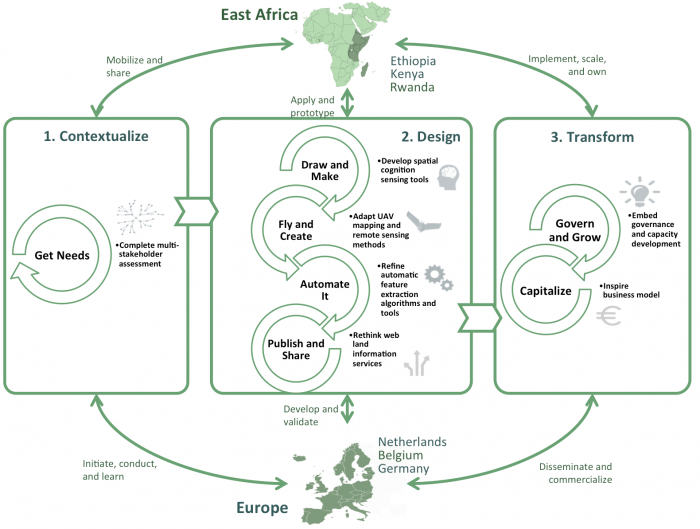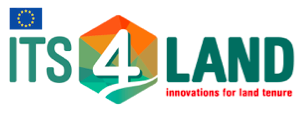How are we rolling it out?
Overall, its4land is design research. We’re co-designing, adapting, integrating, demonstrating, and validating our 6 tools.The work is structured around three main phases – contextualize, design, and transform – and 8 distinct work packages.
The first phase, contextualize (research), delivers a 0-level assessment of user needs across multiple levels and sectors in the three target countries. European partners initiate the process, whilst East African partners mobilize actors and share tacit knowledge. The work is underpinned by the overarching conceptual basis, theoretically grounded in actor-network analysis, and empirically enabled by data capture activities in the three case countries. Activities include data instrument development, ethical approval, field studies, and requirements synthesis. These research activities feed directly into the second phase.
The second phase, design (demonstration and piloting), is focused on developing, prototyping, demonstrating, and validating four geospatial technology innovations: East African and European partners both play active roles in these processes. The four geospatial technologies are smart sketchmaps, UAVs, automated feature extraction techniques, and geocloud services. All four are enabled by the methods of geodetic science, earth observation, and geoinformatics. In this work they are adapted and demonstrated using a prototyping approach. The results from the first phase provide the functional, qualitative (including data needs), and architectural requirements. Different technology combinations will be more relevant in one or more cases: those combinations deemed most suitable for a specific context are prototyped. Importantly, the final part of this phase focuses holistically on the synthesis of the technologies – and represents a first market replication.
The third phase, transform (first market replications), concentrates on implementing, scaling, disseminating, and commercializing the results from phase two. Primarily, this means focusing on refining and embedding the governance model, capacity development approach, business model determination. East African and European partners both play active roles: transfer to the beneficiary groups is intended. These activities are considered integral in steps towards a first market replication.


Recent Comments